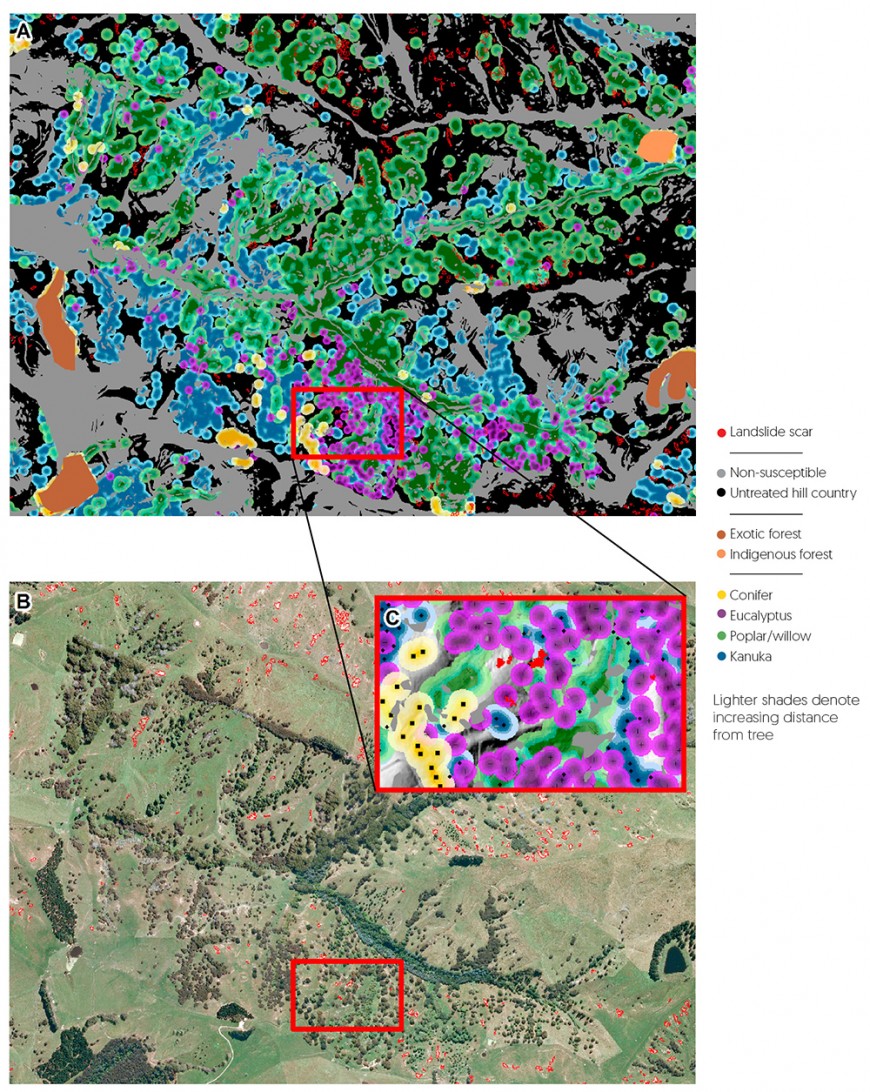Getting to the root causes of soil erosion using high-res remote sensing
Large rainfall events in AoNZ commonly trigger hundreds to thousands of shallow landslides, especially in more marginal pastoral hill country, causing significant damage to land and infrastructure as well as contributing large quantities of sediment to aquatic environments. These landslide inventories are used to determine which land is most susceptible to shallow landsliding to support targeting of erosion control measures.
Within the STEC research programme, scientists at Manaaki Whenua have been using new remote sensing techniques to fill these data gaps, mapping over 100,000 landside scars from high-resolution satellite or aerial imagery across the North Island. The latest mapping uses very high resolution (0.5 m) satellite imagery from storm events. These landslide inventories form the basis for machine learning models that predict where future landslides may occur based on landscape factors such as topography, land cover and rock type. Regional-scale modelling of shallow landslide susceptibility for Hawke’s Bay and Horizons is now complete.
As part of his PhD work within the STEC programme, Manaaki Whenua’s Raphael Spiekermann used semiautomated mapping with high-resolution aerial imagery and slope information from Light Detection and Ranging (LiDAR) data to record some 40,000 shallow landslides in the Wairarapa. Use of LiDAR-based data significantly improved the ability to correctly identify landslide versus nonlandslide locations. The current acquisition of LiDAR elevation data across much of AoNZ will enable improved targeted erosion control with higher-resolution landslide susceptibility modelling.
In linked work published recently in the Journal of Environmental Management, Manaaki Whenua’s Mr Spiekermann, Dr Hugh Smith, and colleagues at Massey University have used LiDAR to delineate individual tree crowns on two pastoral hill country farms near Masterton. This is the first classification of individual trees at landscape scale in AoNZ using freely accessible data, which achieved an overall accuracy of 92.6%.
Tree roots bind soil and help mitigate soil erosion, but some species are better at it than others. Poplars and willows are commonly used in pastoral hill country to mitigate landslide erosion on hillslopes. By identifying the locations and types of trees present or planned in the landscape, the researchers can estimate the reduction in future landslide erosion achieved.

LiDAR imagery of tree crowns delineates species and crown height, enabling landslide risk to be calculated. A = false colour map, B = satellite view, C = detail of individual tree crowns.
